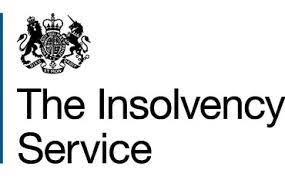HMRC umbrella company ‘checking tool’ looms for workers
Umbrella company consultation response and guidance due from HMRC, as more details come out on Tax Administration and...
READ MORE
Corporate insolvencies rose sharply in December as business costs soared, pandemic-related government support came to an end, and the economic recovery lost momentum.

Data from the Insolvency Service showed the number of registered company insolvencies reached 1,964 — 32 per cent higher than in the same month of 2021 and 76 per cent higher than in December 2019 before the COVID-19 pandemic.
The Office of National Statistics also revealed there were 183 compulsory liquidations in December 2022, more than three and a half times as many as in December 2021 and 8 per cent higher than in December 2019.
Numbers of compulsory liquidations have increased from historical lows seen during the coronavirus (COVID-19) pandemic, partly as a result of an increase in winding-up petitions presented by HMRC.
In December 2022, there were 1,659 creditors’ voluntary liquidations (CVLs), 22 per cent higher than in December 2021 and more than twice as many as December 2019. Numbers of administrations and company voluntary arrangements (CVAs) remained lower than before the pandemic but were higher than in December 2021.
For individuals, 397 bankruptcies were registered, which were 13 per cent lower than in December 2021 and 64 per cent lower than in December 2019.
There were 1,979 debt relief orders (DROs) in December 2022, which was 6 per cent higher than in December 2021 but 5 per cent lower than the pre-pandemic comparison month (December 2019).
There were on average 7,233 individual voluntary arrangements (IVAs) registered per month in the three-month period ended December 2022, which are 9 per cent higher than the three-month period ended December 2021 and 26 per cent higher than the three-month period ended December 2019. IVA numbers have ranged from around 6,300–7,800 per month over the past year.
David Kelly, head of Insolvency at PwC, said while the slight decline in insolvencies in December was welcome news, it is likely in part due to the respite offered by increased trade during the World Cup, particularly in sectors such as retail and leisure, which may still be under increased pressure from cancellations as a result of recent industrial action.
“It’s also not uncommon for creditors to give debtors one last chance over the Christmas trading period and kick difficult decisions into the New Year,” he said.
“Despite there being fewer insolvencies than November, company directors are under no illusions about the challenges in store this year, ranging from high inflation and rising interest rates to poor consumer sentiment and increasing raw material costs. Many are also exhausted from the last few years having already contended with a pandemic and supply chain issues, so may be raising the white flag for insolvency as a consequence of this fatigue.”
Catherine Atkinson, director in PwC’s restructuring and insolvency team, said PwC analysis showed there were only 346 winding-up petitions in December — a 27 per cent decrease from November’s 474.
“As formal applications from creditors to shut down companies, these are a key bellwether of creditor sentiment, and while the lower number is likely to have been impacted by the holiday period, it remains to be seen whether creditors will take a more lenient, collaborative approach with debtors as we head into the recession,” Ms Atkinson said.